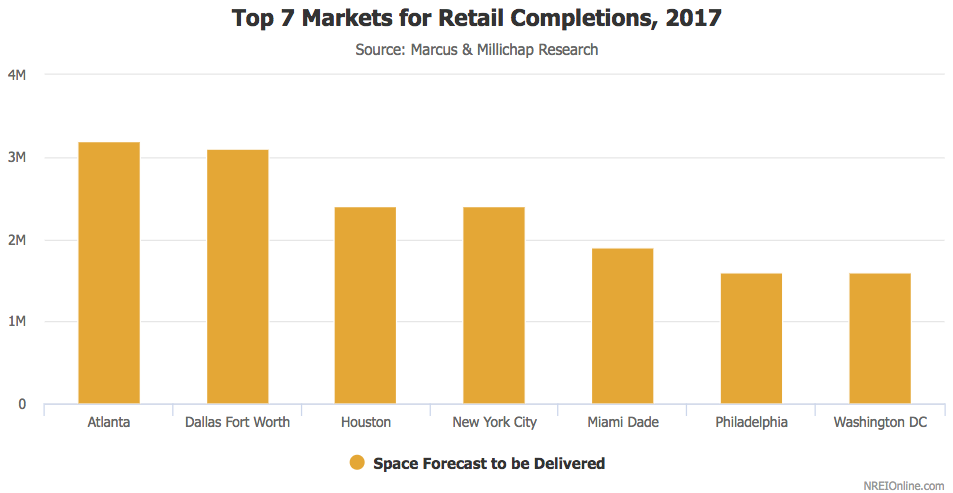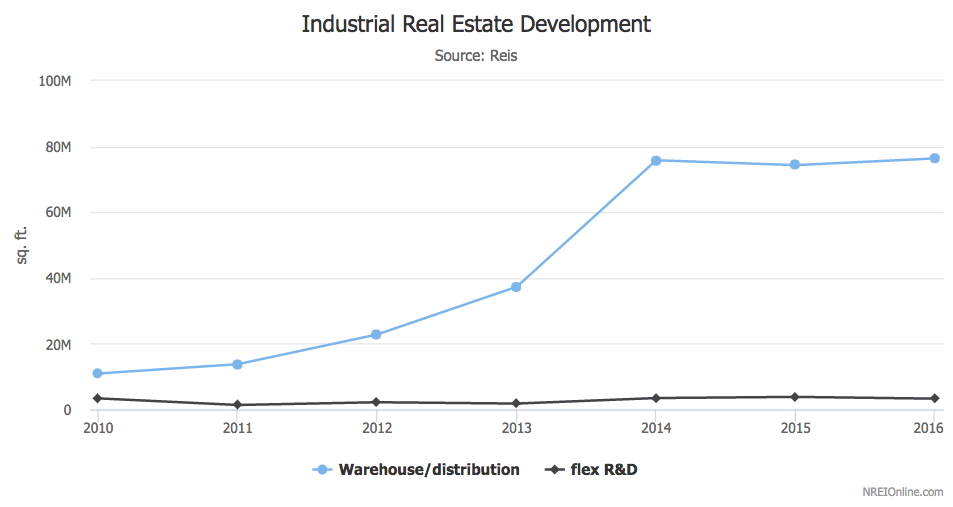

Your Market Analysis of the Top 5 CRE Sectors

Experts agree that despite slowing down, the 2017 commercial real estate market is unwavering, and they are predicting a strong year ahead. Now that the first quarter is over, and we’re nearing the year’s halfway mark, we thought we’d break down today’s current trends in the top commercial real estate sectors. Whether we’re looking at vacancy rates or retail challenges, this year’s market is sure to continue to keep lenders and appraisers on their toes.
TRENDS IN THE OFFICE SECTORThe country’s office vacancy rate increased by 0.1% in the first quarter of the year pushing overall vacancy to 10.3%. This is the first quarterly increase in office vacancies since 2010. Developers added 19 million square feet of new office space last year while average rent growth came in at 2.3% which while a strong number, is still less than half of the rate during the first quarter of 2015.
These numbers coupled with deceleration in major metropolitan areas might seem alarming, but experts assert that while recent conditions have slowed since 2015, the country’s market is still historically strong. We’re at the highest levels of occupation and have the highest rental rate levels ever.
For more pointers on the office sector’s forecast, check out our latest free webinar recording.
TRENDS IN THE APARTMENT SECTORIf your city is among the ones with towering cranes and busy apartment construction sites, you’re witnessing growth in step with occupancy. As the year continues, more apartments will become available, and our strong economy is likely to absorb them, especially with a sturdy job market and robust demand. While, the percentage of vacant apartments might hover in the 4.0 percent range, by the end of 2017, it is likely to reach 4.3 percent, up from 4.0 percent at the end of 2016. One thing to note: developers are having a tough time finding the funds to build new projects due to the fact that lenders are less willing to give construction loans, so we might see a decrease in units delivered in subsequent years.

Since the hotel industry was one of the first sectors to bounce back after the 2008 financial crisis, lenders are smart to keep an eye on this side of the industry. 2017 is proving to be a year in which different factors might impact the hotel sector, but certain service brands have continued to expand, particularly in the boutique sector. Boutique hotels offer limited services, as opposed to their full-service sister brands. Profit margins for boutique hotels can be greater and tend to exceed other real estate segments, too. Regardless, the hotel sector has proven to be a profitable market in the world of CRE.
If you’re looking for even more details about what to expect from the hotel sector in 2017, be sure to look at our free hotel industry webinar.
TRENDS IN THE RETAIL SECTORDespite approximately 81 million square ft. of retail space being forecasted to be completed in 2017, retail development remains well below historic heights. This is less than half of the pace of construction during market peak in 2007 and 2008. Since demand is weak, it’s making construction relatively muted. Retailers are focused on building smaller stores, creating a smaller footprints in more urban developments and areas. Even typical big-box retail brands like Target and Walmart are seeking out smaller concepts. Cities like Atlanta, Dallas Fort Worth, and Houston are among those forecasted to deliver the most retail space in 2017.

Our free webinar featuring the retail sector forecast is available for you to sink your teeth further into this sector.
- Pro Tip: Make sure you’ve seen the latest retail lending handbook from U.S. OCC.
Recent data related to the U.S. industrial sector is pointing in a positive direction despite tough times over the past few years. The latest CBRE report estimated 45 million square feet of industrial space was completed in the first quarter of 2017, making it the highest first-quarter level since 2008. An international trade deficit decline is a positive for the industrial real estate sector since imports generate more aggregate warehouse demand than exports. In fact, 54.7 million sq. ft. of new warehouse/distribution space will be delivered in 2017 and 3.6 million sq. ft. of flex/R&D space, according to Reis. Additionally, retail sales were steadfast in the first quarter of the year with an emphasis on home furnishing and building suppliers. Technology like Amazon’s same day delivery promises, along with consumer confidence due to healthy wages, job growth, and home price gains continues, to make the industrial CRE space soar.

Despite slowing in some sectors, the CRE market’s future certainly looks bright. As we dip into the second quarter, MountainSeed will continue to monitor these trends in the CRE space so you can stay ahead. In the meantime, mark your calendar for our upcoming webinar on CRE evaluations which will launch on May 24th, and don’t forget about our Benchmark report which is a great CRE resource to help you monitor how you’re stacking up against your lending peers.




Comments